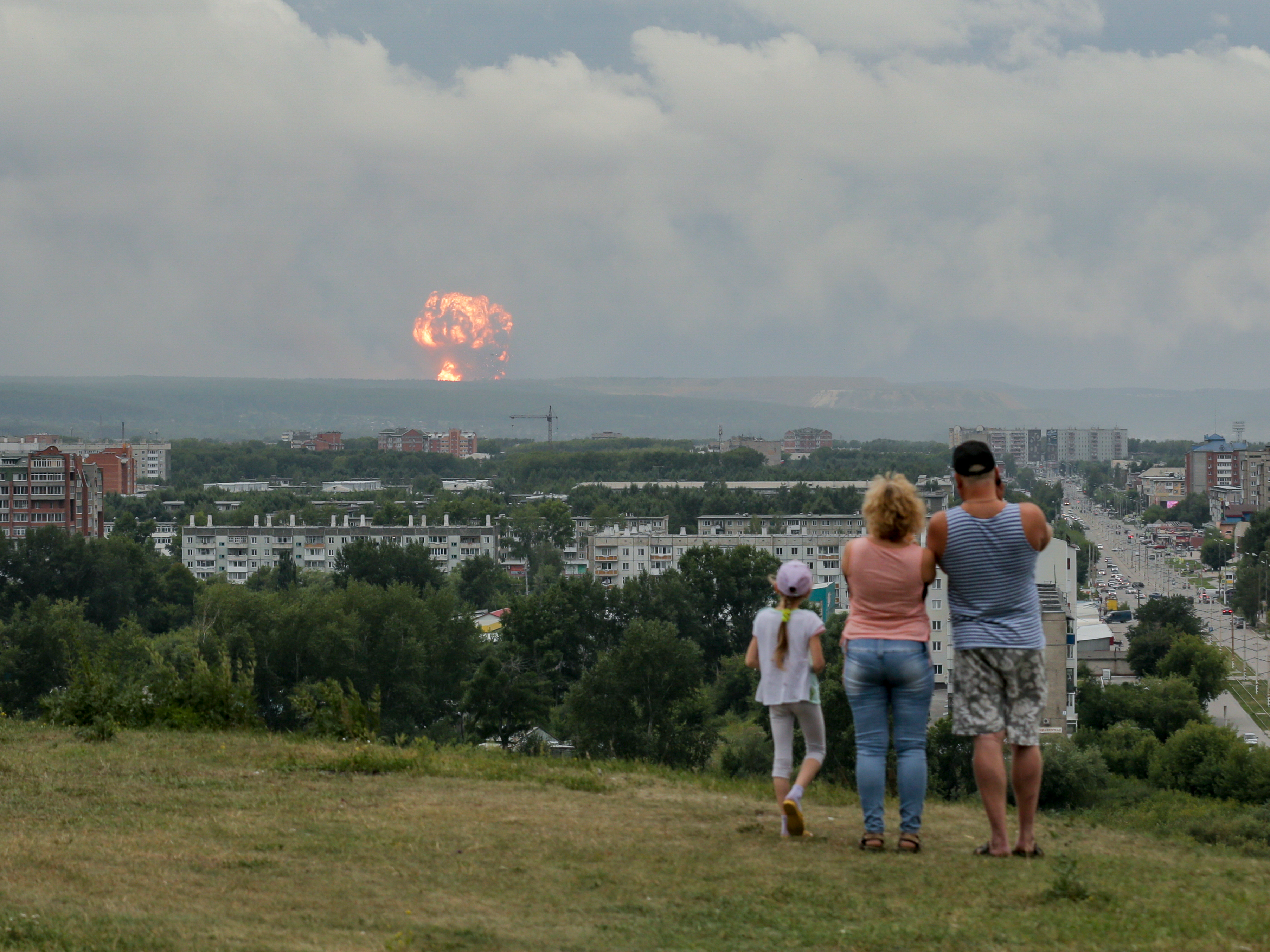- A report from a US State Department official on Oct. 10 provides a clearer picture as to how the Aug. 8 “Skyfall” accident occured at a secret Russian military testing range.
- “The United States has determined that the explosion near Nyonoksa, Russia, was the result of a nuclear reaction that occurred during the recovery of a Russian nuclear-powered cruise missile. The missile remained on the bed of the White Sea since its failed test early last year, in close proximity to a major population center,” the official wrote.
- Amid confusion and obfuscation from Russia and speculation from analyst, the report gives a clearer picture of how the accident, which killed seven Russians, occurred.
- Visit Business Insider’s home page for more stories.
An Aug. 8 nuclear accident near Nyonoska, Russia was caused by a nuclear reaction that occurred while Russians were attempting to recover a nuclear-powered cruise missile submerged in the White Sea after a failed test last year.
A report to the UN General Assembly First Committee on Oct. 10 by Thomas G. DiNanno, the Deputy Assistant Secretary and Senior Bureau Official, Bureau of Arms Control, Verification and Compliance at the State Department, ended months of speculation about the exact cause of the accident, which killed seven Russians.
While experts at the time determined that the cause was a nuclear reactor explosion and tied it to the 9M730 Burevestnik nuclear-powered cruise missile, which NATO calls the SSC-X-9 Skyfall, DiNanno’s report gives a clearer picture of how the accident occurred.
“Russia also has much to answer for regarding the August 8th ‘Skyfall’ incident,” DiNanno wrote.
"The United States has determined that the explosion near Nenoksa, Russia, was the result of a nuclear reaction that occurred during the recovery of a Russian nuclear-powered cruise missile. The missile remained on the bed of the White Sea since its failed test early last year, in close proximity to a major population center," according to the assessment.
After the accident, Russia's explanations and reactions to it varied greatly, from ordering an evacuation of the area to canceling it hours later. Four radiation sensor sites also went mysteriously offline after the accident, pointing to a potential cover-up. Russian officials said that they were not obligated to share the data, which could have helped point to the cause of the accident, The New York Times reported.
Officials also declined to tell doctors treating engineers affected by the blast that they had been exposed to nuclear radiation and requested hospital staff sign a non-disclosure agreement, the Moscow Times originally reported.
Russian state media reported at the time that the explosion was caused by a liquid propellant jet engine that exploded while it was being tested, which did not explain the spike in radiation levels in the area after the accident. By the end of August, a Russian official had admitted that the accident was "linked to the development of weapons which we had to begin creating as one of the tit-for-tat measures in the wake of the United States' withdrawal from the Anti-ballistic Missile Treaty," The New York Times reported.
Read more: New details on Russia's mysterious missile disaster suggest a nuclear reactor blew up
The Skyfall missile, if Russia is able to ever successfully build the nuclear-propelled missile, would represent an alarming new threat to the US, as The New York Times reported in August. It could fly at low altitudes for a seemingly unlimited range and change direction to evade traditional missile defenses.

